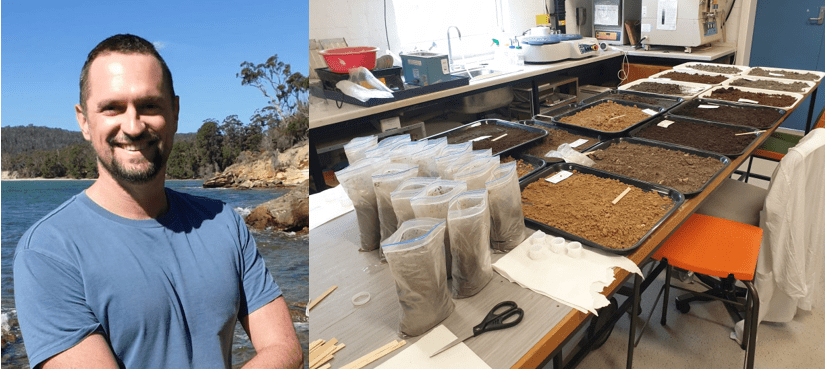The smallest specks can harbour the biggest secrets.
After three years of toil in the soil, Dr Richard Tuffin, UNE Archaeology postdoctoral research fellow, is teasing the long-held secrets from the metal deposits of 90 soil samples from Port Arthur, to rebuild a picture of the work that occurred in the long-buried convict workshops.
But these secrets of the soil are not readily relinquished. Richard has been applying Portable X-ray Fluorescence (P-XRF) analytical techniques to every sample, revealing the elements contained in each. The type and density of the metal contained in each sample suggests the kind of work the convicts undertook in each workspace.
As each sample has been carefully collected from a set area within a site grid, the results of the sample analysis can be mapped back onto the archaeological site. These can be matched with existing records, to confirm and pinpoint the location and exact set-up of the workshops.
Dr Tuffin says that by mapping the different metal concentrations using P-XRF analysis, particular ‘hotspots’ of activity can be uncovered – suggesting the exact location of furnaces or anvils. It’s also a novel approach, as Dr Tuffin says this type of analysis rarely gets conducted on Australian historic sites.
Finding the actual remains of the work processes once undertaken is helping to bring the reality of the convict experience mentioned or hinted at in archival records to life.
The excavation had targeted what’s known to be the main foundry building which passed through at least three main phases of occupation, leaving lots of evidence in its wake – when you know what to look for, and how to find it.
So far, analysis has pointed to promising amounts of iron and copper within the samples, which matches the historically-recorded use of these types of metals by the convict blacksmiths and foundrymen.
Magnetised metallic traces have also been extracted from the soil. Viewed under a microscope, the form and density of the traces can reveal even more about the exact work processes undertaken, such as whether they are hammerscale from metal being worked at an anvil, or spalling from casting or other processes.
It’s painstaking work, but it’s tiny fragments like these that are shedding new light on the convict experience.
Throughout the project Dr Richard Tuffin has been working with numerous UNE staff and former students: Professors Lloyd Weeks, Martin Gibbs and technician Emma Watt (expert oversight and assistance of archaeometallurgical analysis), Dr James Roberts (cataloguing and analysis of faunal remains), Julie Sebanc-Butler (FTIR analysis of brick samples) and Dr E. Jeanne Harris (analysis of artefacts).
Check out the project blog at: https://blog.une.edu.au/port-arthur-2020/
Image: Dr Richard Tuffin in Tasmania, and soil samples from the Port Arthur convict workshops in the UNE archaeology lab for analysis. The samples were retrieved from many different deposits, relating to different phases of use.



Recent Comments